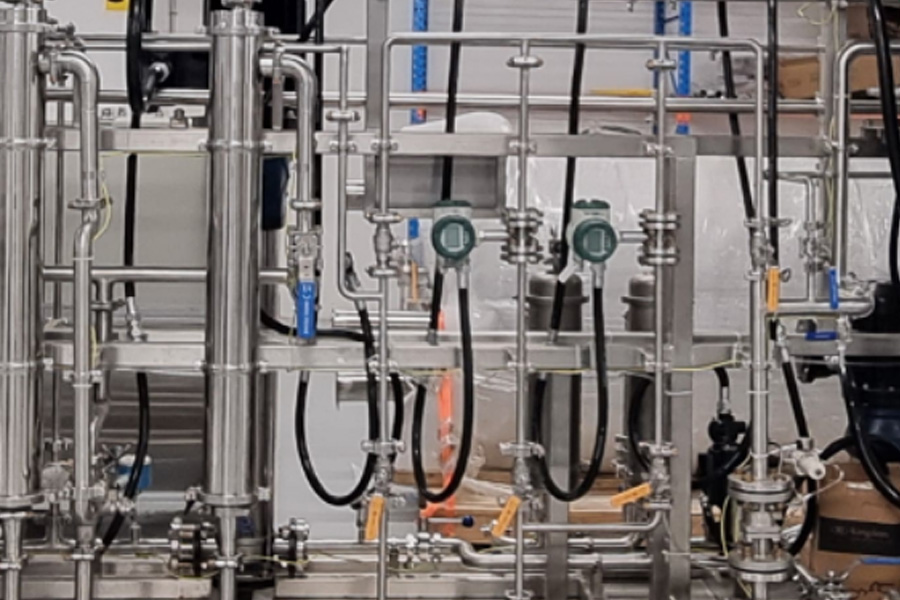Organic solvent nanofiltration (OSN) holds immense promise for industries seeking efficient separation and purification of solvents. As companies increasingly turn to nanofiltration technology to meet their filtration needs, understanding the fundamentals of OSN becomes paramount. This guide serves as a comprehensive resource for those looking to embark on their journey into the realm of organic solvent nanofiltration, offering practical insights and step-by-step instructions to navigate the process effectively.

Comprehending Organic Solvent Nanofiltration
Organic solvent nanofiltration is a membrane-based filtration process used to selectively separate and purify solvents based on their molecular size and chemical properties. Unlike other filtration methods, OSN operates at relatively low pressures and temperatures, making it suitable for sensitive materials and energy-efficient processes. By leveraging nanoscale pores in the membrane, OSN allows for precise control over the separation of solutes, enabling the removal of impurities while retaining desired components.
Selecting the Right Membrane
Choosing the appropriate membrane is crucial for the success of an organic solvent nanofiltration process. Membrane selection depends on various factors, including solvent compatibility, desired separation efficiency, and operating conditions. Polymeric membranes, such as those made from polyamide or polyimide, are commonly used in OSN due to their chemical resistance and tunable properties. However, ceramic and composite membranes may also be suitable for specific applications, offering enhanced durability and selectivity.
System Setup and Configuration
Once the membrane is selected, setting up the OSN system involves assembling the necessary components and configuring the parameters for optimal performance. The system typically consists of a membrane module, feed tank, pumps, pressure regulators, and monitoring instruments. Proper installation and alignment of these components are essential to ensure uniform flow distribution and minimise pressure drop across the membrane. Additionally, adjusting parameters such as feed flow rate, pressure, and temperature is critical for achieving the desired separation efficiency. To ensure smooth implementation and operation, it’s advisable to consult with a reputable nanofiltration company for expert guidance and support throughout the setup process.
Operating Parameters and Optimisation
Operating parameters play a significant role in determining the efficiency and effectiveness of an organic solvent nanofiltration process. By optimising parameters such as transmembrane pressure, solvent flow rate, and temperature, operators can maximise solvent recovery and minimise energy consumption. It is essential to monitor these parameters closely during operation and make adjustments as needed to maintain stable performance and avoid membrane fouling or damage.
Fouling Mitigation and Maintenance
Fouling is a common challenge in organic solvent nanofiltration processes, resulting from the accumulation of solute particles or contaminants on the membrane surface. To mitigate fouling and prolong membrane lifespan, regular maintenance and cleaning procedures are necessary. This may involve periodic backwashing, chemical cleaning, or membrane rejuvenation techniques. Additionally, implementing proper pretreatment steps, such as filtration or ultrafiltration, can help remove larger particles and prevent fouling during OSN operation.
Safety Considerations
Safety is paramount when working with organic solvents in nanofiltration processes. Operators must be aware of the potential hazards associated with solvent exposure, inhalation, and flammability. Proper ventilation, personal protective equipment (PPE), and engineering controls should be implemented to minimise risks and ensure a safe working environment. Additionally, operators should undergo thorough training on handling organic solvents and responding to emergencies effectively.
Conclusion
Organic solvent nanofiltration offers a versatile and efficient solution for solvent separation and purification in various industrial applications. By following this guide and adhering to best practices in membrane selection, system setup, operation, and maintenance, companies can harness the full potential of OSN technology to achieve their filtration goals effectively and sustainably. As the demand for cleaner and more efficient processes continues to grow, organic solvent nanofiltration is poised to play a pivotal role in shaping the future of industrial filtration.

To explore organic solvent nanofiltration solutions tailored to your industry needs, contact SepPure today.

